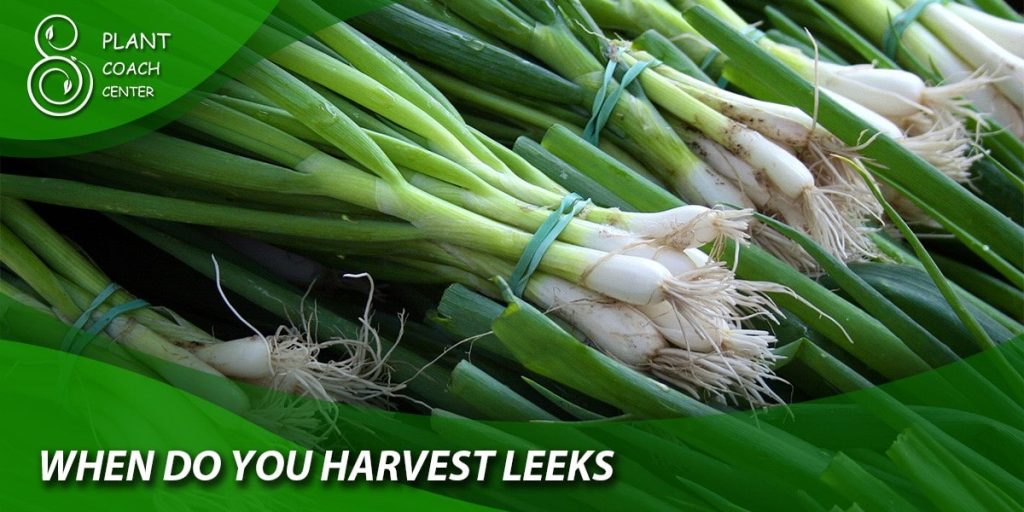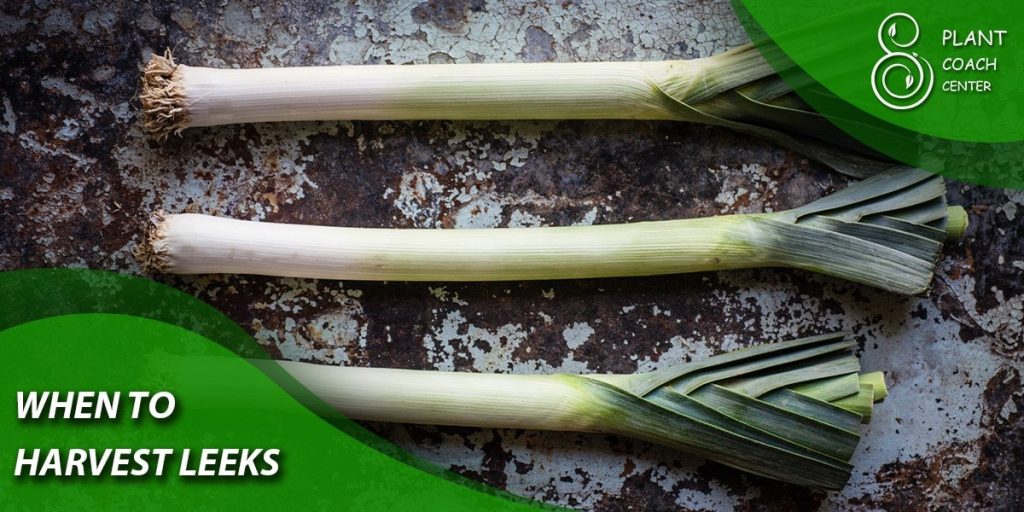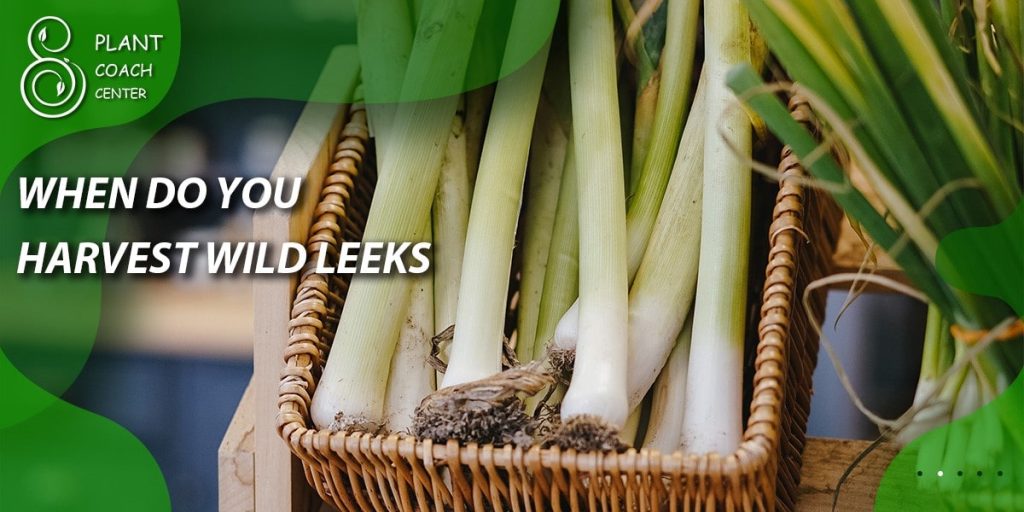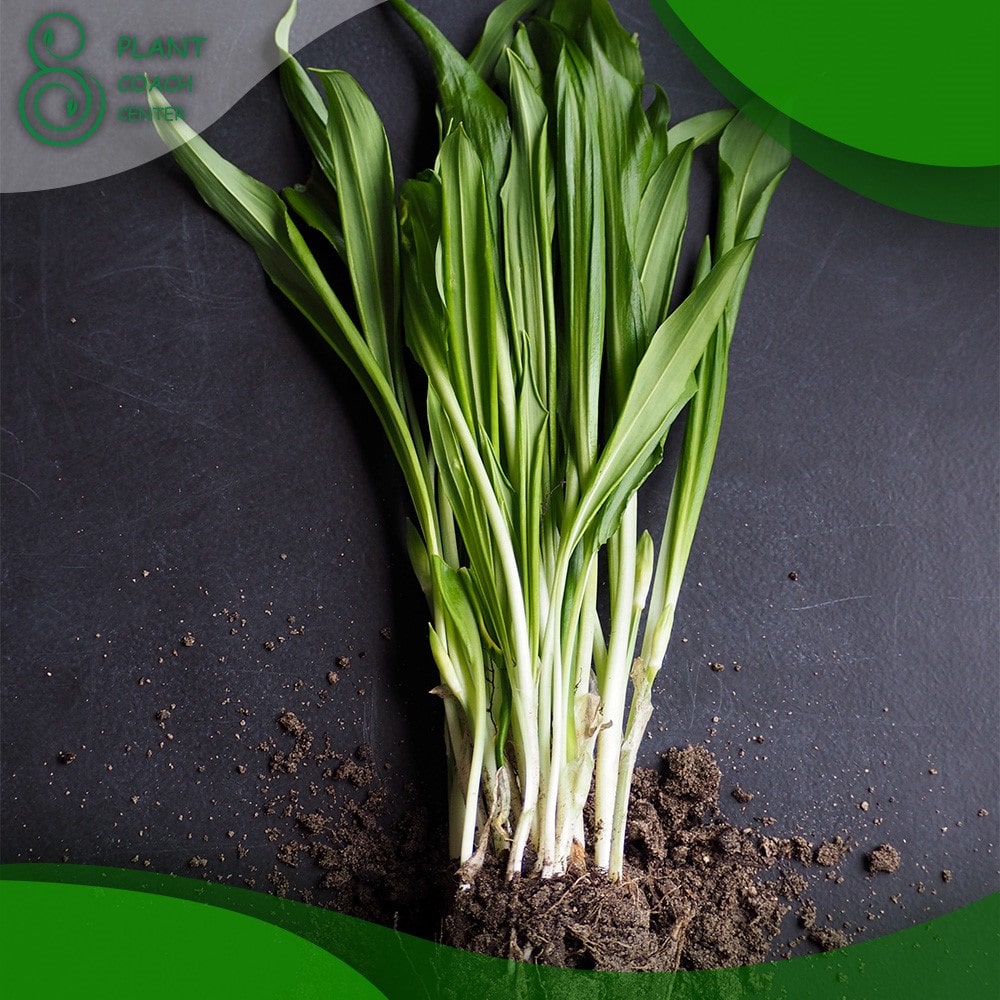When Do You Harvest Leeks
Delightfully versatile and brimming with a distinct flavor, leeks have earned their place as a beloved addition to the culinary world. These tall, slender alliums, with their subtle sweetness and delicate onion-like taste, not only enhance many dishes but also lend a touch of elegance to every plate they grace. But harvesting leeks is a skillful endeavor that requires a keen understanding of their growth patterns and optimal harvest times.

This article delf into the intricacies of knowing when to pluck these graceful vegetables from the earth, ensuring you unlock their full potential in taste and nutritional value. From recognizing the signs of maturity to mastering the art of overwintering, we’ll equip you with the knowledge to make the most of your leek harvest.
Whether you’re an avid gardener or a culinary enthusiast, join us as we explore the fascinating world of leeks and uncover the secrets to cultivating these delectable delights at precisely the right moment. Get ready to embark on a journey of discovery that will elevate your leek-harvesting prowess to new heights and inspire a deeper appreciation for these marvelous alliums.
Signs of Leek Maturity
Harvesting leeks at the peak of their maturity ensures a satisfying flavor and a satisfying gardening experience. Knowing the signs of leek maturity is essential to avoid harvesting them too early when they are underdeveloped or too late when they become woody and lose their tenderness. Here are the key indicators to look for when determining if your leeks are ready to be harvested:
Size and Thickness
Mature leeks generally reach a diameter of around 1 to 2 inches (2.5 to 5 cm) and can vary in length, depending on the variety. The leeks will visibly thicken as they grow, giving them a sturdy and substantial appearance.
Firmness
Gently squeeze the leek’s base to assess its firmness. A mature leek will feel solid and well-developed, while an immature one might be soft or squishy.
White Shaft Length
The desirable part of a leek is the white shaft, which remains tender and flavorful when harvested at the right Stage. The white post should ideally be around 6 to 10 inches (15 to 25 cm) long, although some varieties may have shorter or longer shafts.
Green Leaves
The dark green leaves that extend from the white shaft are edible as well, but they toughen with age. A mature leek will have dark green leaves that are still relatively tender and not overly fibrous.
Bulb Formation
Some leek varieties develop a bulbous base as they mature. While not all leeks exhibit this trait, those that do should have a well-formed, distinct bulb at the bottom.
Glossy Appearance
Mature leeks often have a shiny or waxy appearance on their white shaft, indicating healthy and robust growth.
Understanding Growth Cycles
Comprehending the growth cycles of leeks is crucial for successful cultivation and Harvesting. Like many vegetables, Leeks go through distinct stages from seed to maturity, each contributing to the final flavor and quality of the harvest. Let’s explore the critical growth phases of leeks:
Germination
It all begins with the tiny leek seeds germinating in well-prepared soil. Adequate moisture and warmth are essential for successful germination, usually within 10 to 14 days.
Seedling Stage
As the seedlings emerge from the soil, they develop delicate, grass-like leaves. They are vulnerable to pests and extreme weather at this stage, so protecting them is essential.

Transplanting
Once the seedlings are 8 to 10 weeks old and about the Thickness of a pencil, they are ready for transplanting into their permanent growing position. Proper spacing ensures they have enough room to develop.
Bulbing
During the growing process, leeks slowly form their bulbous base, one of the most sought-after parts for culinary use. Bulb development is influenced by the number of daylight hours, and varieties differ in their sensitivity to day length.
Maturation
Leeks typically take around 100 to 120 days to mature from sowing. This is the Stage when the leeks reach full size, and the white shafts become thick and succulent.
Overwintering
In colder climates, leeks can be left in the ground over winter, where they experience a natural dormant period. The cold temperature converts starches into sugars, enhancing their flavor and sweetness.
The Art of Patience: Overwintering Leeks
For avid gardeners seeking to unlock the full potential of their leek harvest, the art of patience comes into play with the practice of overwintering leeks. Overwintering involves leaving the leeks in the ground during the colder months, allowing them to go through a natural growth process that enhances their flavor and texture. While it requires patience and planning, the rewards are worth the wait.
Preparing Leeks for Winter
Before the first frost sets in, ensure your leeks are well-prepared for the colder months. Trim the leaves back to around 6 inches (15 cm) and gently clear away any debris around the plants. Applying a layer of mulch around the base of the leeks will help insulate the soil and protect them from freezing temperatures.
The Natural Sweetening Process
As the temperatures drop, leeks experience a phenomenon known as “cold sweetening.” During this period, starches within the leeks are converted into sugars, resulting in a milder and sweeter flavor. This transformative process takes place in response to the cold stress, making the overwintered leeks a delicacy to look forward to.
Winter Care
While leeks are relatively hardy, they still require some care during winter. Ensure the soil remains consistently moist but not waterlogged. Adding a layer of garden fabric over the layer eeks can provide extra protection against extreme cold in regions with severe winters.
Harvesting in Spring
As spring approaches and the weather begins to warm, your patience will be rewarded with leeks that have reached their peak flavor. When the soil starts to thaw, and the leeks are fully matured, you can harvest them for a delicious addition to your spring dishes.
Culinary Delights
The overwintered leeks are a culinary delight that can be enjoyed in various dishes. Their sweeter and milder taste makes them perfect for soups, stews, and sautés, adding depth and character to your recipes.
Regrowing Leeks
Interestingly, overwintered leeks have the potential to regrow when harvested correctly. Leave a small portion of the leek base with the roots intact, and in some cases, they may produce new growth, giving you a second chance to enjoy their delectable flavor.

Harvesting Techniques for Different Climates
Leeks, a beiAsnt and adaptable crop, can succeed successfully growing in a wide range of climates. However, the timing and techniques for Harvesting may vary depending on your region’s weather patterns and temperature extremes. To make the most of your leek harvest, consider these harvesting techniques tailored for different climates:
Warm Climates
– Early Planting: In warmer regions, opt for early planting in late summer or early fall to take advantage of milder temperatures. This allows the leeks to establish themselves before the intense heat arrives.
– Shade and Mulch: Shield the leeks from the scorching sun by providing partial shade during the hottest parts of the day. Mulching around the base of the plants helps retain moisture and prevents the soil from overheating.
Cold Climates
– Quick Harvest: Consider choosing faster-maturing leek varieties in colder climates with short growing seasons. These types will mature more rapidly, allowing you to harvest them before the frost sets in.
– Frost Protection: Keep an eye on weather forecasts and harvest your leeks just before the first hard frost. If a surprise frost threatens, cover the leeks with straw or garden fabric to protect them temporarily.
Mediterranean Climates
– Succession Planting: In regions with mild winters and hot summers, practice succession planting to enjoy a continuo supply of about the year. Plant leek seedlings at intervals, ensuring a steady harvest.
– Winter Harvest: Take advantage of the mild winters by leaving leeks in the ground for overwintering. This sweetens their flavor and provides fresh leeks during the colder months.
Wet Climates
– Raised Beds: In areas with heavy rainfall and waterlogged soil, opt for raised beds to improve drainage. This helps prevent leaks from sitting in water, which can lead to rot and other diseases.
– Harvesting Before Heavy Rains: Keep an eye on weather forecasts and harvest leeks before heavy rainfalls, as excess moisture can dilute the flavor and affect the texture.
Dry Climates
– Deep Watering: In arid reinsure, receive sufficient water, especially in arid regions, during hot spells. Deep watering encourages their roots to grow deeper into the soil, promoting better drought resistance.
– Mulching: Apply a thick layer of mulch around the leeks to conserve soil moisture and protect them from extreme heat.
Harvesting for Continual Supply
Employing innovative harvesting strategies is critical to ensuring a continual supply of fresh leeks throughout the growing season. By implementing techniques that encourage a staggered harvest and promote continuous growth, you can savor the succulent taste of leeks from your garden for an extended period. Here’s how to harvest for a continual supply:
Succession Planting
Succession planting is a fundamental method for extending the leek harvest season. Rather than planting all your leek seeds immediately, sow them in batches regularly. This way, you’ll have leeks at various stages of growth, providing you with a continuous stream of mature leeks ready for Harvesting.
Harvesting Outer Leaves
For baby leeks or immature plants, consider adopting a “cut-and-come-again” approach. Rather than uprooting the entire plant, harvest the outer leaves as needed. This allows the inner leaves to grow and ensures a steady supply of tender young leeks.
Selective Harvesting
When the leeks have reached a desirable size, selectively harvest them based on your culinary needs. Remove the more giant leeks first while leaving, the smaller ones to continue maturing. This way, you can enjoy leeks at different stages of growth.

Leek Clumps
When transplanting leek seedlings, plant them in small clumps instead of individual plants. As the clusters grow, you can selectively harvest individual leeks without disturbing the others, providing an ongoing supply of leeks.
Overlapping Varieties
Choose leek varieties with varying maturity dates. By selecting early, mid-season, and late-season varieties, you can ensure a continuous harvest over an extended period. The early types will be ready first, followed by the mid and late-season varieties, prolonging your leek harvest season.
Controlled Storage
For regions with harsh winters, consider lifting the mature leeks from the ground and storing them in a cool, dry place. Kept in boxes filled with sand or a similar medium, these stored leeks will remain fresh and usable for several months, even after the gardening season has ended.
Beyond the Basics: Innovative Leek Harvesting Ideas
While traditional harvesting methods are effective, exploring innovative techniques can elevate your leek-growing experience. From maximizing yield to finding unique ways to enjoy your leeks, here are some creative and out-of-the-box ideas for harvesting leeks:
Baby Leeks for Gourmet Delights
Instead of waiting for leeks to reach full maturity, harvest them while they are still young and tender to enjoy gourmet baby leeks. These delicate treats add a subtle onion-like flavor to salads, stir-fries, and other dishes, and their small size makes them perfect for garnishing.
Continuous Harvesting with Containers
Grow leeks in containers or pots to facilitate continual Harvesting. By planting a few leek seedlings in each container and staggering their planting dates, you can pick leeks as needed without uprooting the entire plant, ensuring a fresh supply for the kitchen.
Regrowing Leek Scraps
Don’t let any part of the leek go to waste! After using the white shafts in your recipes, save the root ends and place them in water or soil. They may regrow with a bit of care, producing a fresh batch of tender green leaves that can be used in various dishes.
Preserving Leeks
Pickling and Freezing: To enjoy the delightful taste of leeks year-round, consider keeping them through pickling or freezing. Pickled leeks add a tangy twist to salads and sandwiches, while frozen leeks maintain their flavor and texture when added to soups and stews during the colder months.
Using Leek Flowers
Leek flowers are beautiful and edible! Allow some of your leeks to bolt and flower. Harvest the blossoms and use them to garnish salads or as an intriguing ingredient in various culinary creations.
Leek “Cut-and-Come-Again” Beds
Designate a section of your garden as a “cut-and-come-again” leek bed. Plant densely in this area and harvest the outer leaves of the leeks regularly. This continuous harvesting approach will yield a continual supply of young and tender leeks without uprooting the entire plant.

Harvesting Leek Seeds
Allow some leeks to fully mature and produce seed heads. Harvest the seeds and store them for future planting seasons. Growing leeks from your saved sources add a gratifying element of self-sufficiency to your gardening endeavors.
Conclusion
In conclusion, mastering the art of harvesting leeks is a rewarding journey that connects us with nature’s rhythms and enriches our culinary experiences. From recognizing the signs of leek maturity to embracing overwintering and exploring innovative techniques, every step contributes to a bountiful and delightful harvest.
By tailoring our harvesting methods to suit different climates and adopting practices like succession planting and container gardening, we can relish a continual supply of these graceful alliums throughout the year. With each new season, the plantcouchcenter.com website stands as a valuable resource, guiding gardeners and food enthusiasts in their pursuit of cultivating, Harvesting, and savoring the wonderful world of leeks.
So, whether you are a seasoned gardener or just starting on this flavorful adventure, let the knowledge shared in this article inspire you to embark on a journey that celebrates the magic of growing and harvesting leeks in harmony with the ever-changing seasons. Happy leek-harvesting and bon appétit!
How do I know when my leeks are ready to harvest?
Look for signs of maturity, including a diameter of 1 to 2 inches, firmness, and a white shaft length of 6 to 10 inches.
Can I leave leeks in the ground over winter?
Overwintering leeks enhance their flavor through a natural sweetening process, providing a delectable harvest in Spring.
What are some innovative ways to enjoy leeks?
Harvest baby leeks for gourmet dishes, regrow leek scraps, and use leek flowers as edible garnishes.







